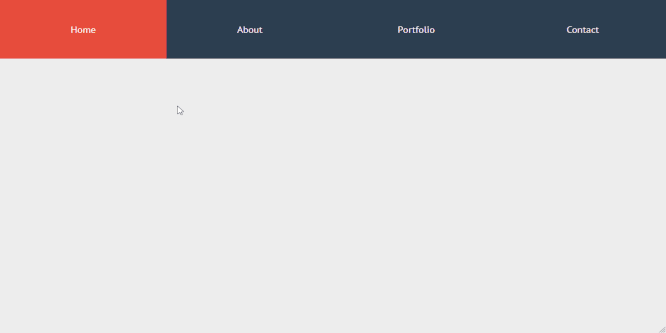

I think it would work really well for vertical navigation menus or sidebar menus that require multi-level links. Not everyone wants this effect because it can take up a lot of space on the page. These checkboxes can be selected all at once or with any combination so users can open many accordion areas simultaneously.

It also relies purely on CSS3 but it uses checkboxes instead of radios. If you want the exact opposite of the “one item at a time” accordion then you might like this design created by Frank Ali. It doesn’t rely on fancy animations or anything complex beyond just showing content and creating a usable interface. The beauty of this snippet is the simplicity of the design. It uses a real simple design, but you can also change the colors/fonts on your own with extra CSS.
#Vertical css3 menu how to
This CSS accordion shows you how to do this using CSS3 and radio input fields.Įach input is heavily customized to blend right into the accordion. This means if you click another item the previous one auto-closes at the same time as the new one opens. The one trait I like about traditional accordions is how one menu item always stays open.
#Vertical css3 menu plus
Plus you could even link the bottom title area to a related page or blog post making this great as a featured section for magazine-style layouts. You can feature related photos and add some descriptive text into each accordion field. I’d recommend this mostly as a custom slideshow feature on a homepage for startups or local companies. This thing is gorgeous and one of the few easy-to-setup accordions out there. In this pure CSS3 accordion you’ll find a bunch of really simple effects and custom animation features. This means you can control most user hover behaviors just with CSS. Hover-to-animate effects can be controlled using the CSS :hover pseudo-class. There’s a lot of practical snippets on there you may find useful. It’s one of the best options for designing a sleek accordion UI without getting into messy JavaScript.Īlso check out Scott’s CodePen page if you want to see more great stuff he has built. The radio inputs have been totally restyled and take up a good amount of space in the sliding menu. This specific design is snappy and super easy to use, even on mobile devices. This pen by Scott Earl shows that radio accordions can be both functional and beautiful. These buttons only let the user select one item at a time so they can be programmatically re-designed into an accordion setup. Radio AccordionsĪnother pure CSS method of creating an accordion is through radio inputs. Probably not the most efficient solution if you want broad browser support, but still, an amazing effect that proves CSS is usually all you need. It uses rotation animation effects to open and close the accordion based on which tab you click. This specific example developed by Wesley van Wyk showcases what you can do with pure CSS3 and a little imagination. Most of the time they feature images or some type of Q&A with guidance for users.īut this type of accordion can also work as an onboarding feature or a simple in-page information box. I don’t see too many of these horizontal accordions but they’re really cool. The accordion menu is versatile enough to add real value to any interface with many related links.

These menus include dropdowns and responsive slideouts, but many devs forget about accordions.
#Vertical css3 menu free
You can build some nice menus with jQuery and most of them use free plugins.


 0 kommentar(er)
0 kommentar(er)
